1mg
Showing 2951–3000 of 3042 results
-
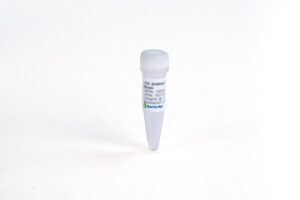
SCC (SC9), mAb, Mouse
$307.05 Add to cart View Product DetailsSquamous
cell carcinoma antigen (SCCA) is one protein member of the serine protease
inhibitor (Serpin) family. Expression of SCCA is elevated in cancers of the cervix, lung, head and neck, and liver. As a result,
it is a useful biomarker for aggressive squamous cell carcinoma (SCC). -

SCCA Antibody (SC4), mAb, Mouse
$318.26 Add to cart View Product DetailsSquamous
cell carcinoma antigen (SCCA) is one protein member of the serine protease
inhibitor (Serpin) family. Expression of SCCA is elevated in cancers of the cervix, lung, head and neck, and liver. As a result,
it is a useful biomarker for aggressive squamous cell carcinoma (SCC) -
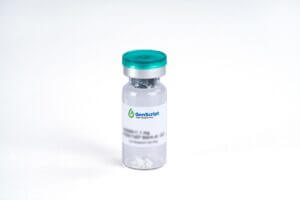
sCD40L, Human
$1,030.69 Add to cart View Product DetailsCD40 ligand, CD40L (also known as CD154, TRAP or gp39), is a 261 amino acid type II transmembrane glycoprotein belonging to the TNF family, CD40L is expressed predominantly on activated CD4+ T lymphocytes, and also found in other types of cells, like NK cells, mast cells, basophils and eosinophils. Human CD40L shares 78% amino acid identity with its mouse counterpart. The receptor of CD40L is CD40, a type I transmembrane glycoprotein belonging to the TNF receptor family. CD40 is expressed on B lymphocytes, monocytes, dendritic cells and thymic epithelium. Although all monomeric, dimeric and trimeric forms of soluble CD40L can bind to CD40, the trimeric form of soluble CD40L has the most potent biological activity through oligomerization of cell surface CD40, a common feature of TNF receptor family members. CD40L mediates a range of activities on B cells including induction of activation-associated surface antigen, entry into cell cycle, isotype switching and Ig secretion and memory generation. CD40-CD40L interaction also plays important roles in monocyte activation and dendritic cell maturation.
-

SCF, Human (P. pastoris-expressed)
$1,177.31 Add to cart View Product DetailsStem cell factor (also known as SCF, KIT-ligand, KL, or steel factor) is a cytokine that binds to the c-KIT receptor (CD117). SCF can exist both as a transmembrane protein and a soluble protein. It stimulates the proliferation of myeloid, erythroid, and lymphoid progenitors in bone marrow cultures and has been shown to act synergistically with colony stimulating factors. SCF plays an important role in the hematopoiesis during embryonic development. SCF can regulates HSCs in the stem cell niche in the bone marrow. SCF has been shown to increase the survival of HSCs in vitro and contributes to the self-renewal and maintenance of HSCs in-vivo.
-

SCF, Mouse
$1,177.31 Add to cart View Product DetailsStem cell factor (also known as SCF, KIT-ligand, KL, or steel factor) is a cytokine that binds to the c-KIT receptor (CD117). SCF can exist both as a transmembrane protein and a soluble protein. It stimulates the proliferation of myeloid, erythroid, and lymphoid progenitors in bone marrow cultures and has been shown to act synergistically with colony stimulating factors. SCF plays an important role in the hematopoiesis during embryonic development. SCF can regulates HSCs in the stem cell niche in the bone marrow. SCF has been shown to increase the survival of HSCs in vitro and contributes to the self-renewal and maintenance of HSCs in-vivo.
-

SDF-1α/CXCL12, Human
$2,018.25 Add to cart View Product DetailsStromal-Cell Derived Factor-1 alpha/ CXCL12 (SDF-1α) and SDF-1β, members of the chemokine α subfamily that lack the ELR domain, were initially identified using the signal sequence trap cloning strategy from a mouse bone-marrow stromal cell line. These proteins were subsequently also cloned from a human stromal cell line as cytokines that supported the proliferation of a stromal cell-dependent pre-B-cell line. SDF-1α and SDF-1β cDNAs encode precursor proteins of 89 and 93 amino acid residues, respectively. Both SDF-1α and SDF-1β are encoded by a single gene and arise by alternative splicing. The two proteins are identical except for the four amino acid residues that are present in the carboxy-terminus of SDF-1β and absent from SDF-1α. SDF-1/PBSF is highly conserved between species, with only one amino acid substitution between the mature human and mouse proteins. SDF-1/PBSF acts via the chemokine receptor CXCR4 and has been shown to be a chemoattractant for T-lymphocytes, monocytes, pro- and pre- B cells, but not neutrophils. Mice lacking SDF-1 or CXCR4 have been found to have impaired B-lymphopoiesis, myelopoiesis, vascular development, cardiogenesis and abnormal neuronal cell migration and patterning in the central nervous system.
-

SDF-1β/CXCL12, Human
$2,018.25 Add to cart View Product DetailsStromal-Cell Derived Factor-1 beta (SDF-1β), also known as SCYB12, PBSF and CXCL12, is an 8.3 kDa, heparin-binding member of the CXC (or alpha) family of chemokines and signal through the CXCR4 receptor. SDF-1α and β are reported to be monomers at neutral pH and physiologic ionic strength, On the cell surface, this may well facilitate SDF-1 interaction with its two receptors, CXCR4 and syndecan4. Heparin sulfate is known to protect SDF-1 from proteolysis, and CXCR4 exists constitutively as a dimer. Among its many functions, CXCL12 is known to influence lymphopoiesis, regulate patterning and cell number of neural progenitors, and promote angiogenesis (12, 13). It also enhances the survival of myeloid progenitor cells
-

Shh (C24II), Human
$1,177.31 Add to cart View Product DetailsSonic Hedgehog (Shh) is a member of the Hedgehog (Hh) family of highly conserved proteins which are widely represented throughout the animal kingdom. In mammal, there are three related Hh proteins, Sonic (Shh), Desert (Dhh) and Indian (Ihh). They share a high degree of amino-acid sequence identity (e.g., Shh and Ihh are 93% identical). Sonic Hedgehog plays a role in cell growth, cell specialization, and the normal shaping (patterning) of the body. Shh is also important for development of the brain and spinal cord (central nervous system), eyes, limbs, and many other parts of the body.
-

Shh (C25II), Mouse
$1,177.31 Add to cart View Product DetailsSonic Hedgehog (Shh) is a member of the Hedgehog (Hh) family of highly conserved proteins which are widely represented throughout the animal kingdom. In mammal, there are three related Hh proteins, Sonic (Shh), Desert (Dhh) and Indian (Ihh). They share a high degree of amino-acid sequence identity (e.g., Shh and Ihh are 93% identical). Sonic Hedgehog plays a role in cell growth, cell specialization, and the normal shaping (patterning) of the body. Shh is also important for development of the brain and spinal cord (central nervous system), eyes, limbs, and many other parts of the body.
-

Shh, Human
$1,957.88 Add to cart View Product DetailsMembers of the Hedgehog (Hh) family are highly conserved proteins which are widely represented throughout the animal kingdom. The three known mammalian Hh proteins, Sonic (Shh), Desert (Dhh) and Indian (Ihh) are structurally related and share a high degree of amino-acid sequence identity (e.g., Shh and Ihh are 93% identical). The biologically active form of Hh molecules is obtained by autocatalytic cleavage of their precursor proteins and corresponds to approximately the N-terminal one half of the precursor molecule. Although Hh proteins have unique expression patterns and distinct biological roles within their respective regions of secretion, they use the same signaling pathway and can substitute for each other in experimental systems.
-
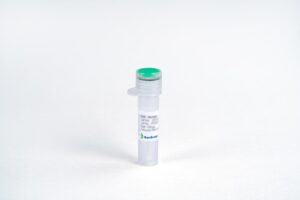
Shh, Mouse
$1,177.31 Add to cart View Product DetailsMembers of the Hedgehog (Hh) family are highly conserved proteins which are widely represented throughout the animal kingdom. The three known mammalian Hh proteins, Sonic (Shh), Desert (Dhh) and Indian (Ihh) are structurally related and share a high degree of amino-acid sequence identity (e.g., Shh and Ihh are 93% identical). The biologically active form of Hh molecules is obtained by autocatalytic cleavage of their precursor proteins and corresponds to approximately the N-terminal one half of the precursor molecule. Although Hh proteins have unique expression patterns and distinct biological roles within their respective regions of secretion, they use the same signaling pathway and can substitute for each other in experimental systems.
-

Siglec-10 Fc Chimera, Human
$1,293.75 Add to cart View Product DetailsSiglec-10 is immune system-restricted and highly expressed in peripheral blood leukocytes. Siglec-10 preferably binds to α-2,3- or α-2,6-linked sialic acid (similarity). Siglec10 is involved in the negative regulation of B cell antigen receptor signal transduction. The inhibition of B cell activation depends on PTPN6/SHP-1 (by similarity). The binding of Siglec10 to CD24 may be involved in the selective suppression of the immune response (by similarity) to risk-related molecular patterns (DAMPs) (such as HMGB1, HSP70 and HSP90). The combination of Siglec10 and CD24 may regulate the immune response of natural killer (NK) cells. Play a role in controlling autoimmunity (by similarity). In the process of initiating an adaptive immune response by CD8-α+ dendritic cells, cross-presentation is inhibited by weakening the formation of MHC class I peptide complexes. The function seems to imply the recruitment of PTPN6/SHP-1, which dephosphorylates NCF1 of the NADPH oxidase complex, thereby promoting phagosome acidification (by similarity).
-

Siglec-15 Fc Chimera, Human
$1,293.75 Add to cart View Product DetailsSiglec-15 preferentially recognizes the Neu5Acalpha2-6GalNAcalpha- structure. Siglec-15 associates with the activating adaptor proteins DNAX activation protein (DAP)12 and DAP10 via its lysine residue in the transmembrane domain. Siglec-15 is the second human Siglec identified to have an activating signaling potential; unlike Siglec-14, however, it does not have an inhibitory counterpart.
-

sIL-6Rα, His, Human
$1,470.56 Add to cart View Product DetailsInterleukin-6 Receptor (IL-6R) is a single trans-membrane protein that is the receptor for Interleukin-6 (IL-6). IL-6R forms a hexameric complex upon binding 2 molecules of IL-6 and two molecules of glycoprotein 130 (gp130) which activates intracellular JAK/STAT pathways. Although the normal form of IL-6R is the membrane-bound 80 kDa subunit, a soluble form of IL-6R (sIL-6R) can be generated physiologically by limited proteolysis or alternative splicing. sIL-6R binds to both IL-6 and gp130 generating intracellular signaling. In the immune system, sIL-6R is produced by both naïve and memory CD4 T-cells and strongly augments IL-6 ligand’s induction of Th-17 cells.
-
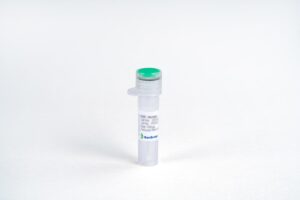
SIRPα Fc Chimera, Human
$1,035.00 Add to cart View Product DetailsSignal regulatory protein alpha (SIRPα, designated CD172a), is also known as CD172 antigen-like family member A (CD172a), also called SHPS-1 (SHP substrate 1) and previously, MyD-1 (Myeloid/Dendritic-1), which is a monomeric about 90kDa type I transmembrane glycoprotein that belongs to the SIRP/SHPS (CD172) family of the immunoglobulin superfamily. SIRPα is Ubiquitous and highly expressed in brain. SIRPA/CD172a is immunoglobulin-like cell surface receptor for CD47 and acts as docking protein and induces translocation of PTPN6, PTPN11 and other binding partners from the cytosol to the plasma membrane. SIRPA/SHPS-1 supports adhesion of cerebellar neurons, neurite outgrowth and glial cell attachment and may play a key role in intracellular signaling during synaptogenesis and in synaptic function by similarity. SIRPα recognition of surfactants SP-A and SP-D in the lung can inhibit alveolar macrophage cytokine production.
-
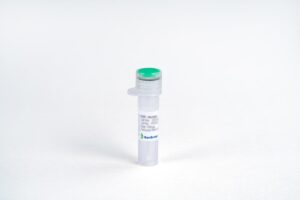
SPARC, Human
$1,224.75 Add to cart View Product DetailsSPARC, an acronym for ’secreted protein, acidic and rich in cysteine’, is also known as osteonectin or BM-40. It is the founding member of a family of secreted matricellular proteins with similar domain structure. The 303 amino acid , 43 kDa protein contains a 17 aa signal sequence, an N-terminal acidic region that binds calcium, a follistatin domain containing Kazal-like sequences, and a C-terminal extracellular calcium (EC) binding domain with two EF-hand motifs. SPARC is produced by fibroblasts, capillary endothelial cells, platelets and macrophages, especially in areas of tissue morphogenesis and remodeling. SPARC shows context-specific effects, but generally inhibits adhesion, spreading and proliferation, and promotes collagen matrix formation. For endothelial cells, SPARC disrupts focal adhesions and binds and sequesters PDGF and VEGF. SPARC is abundantly expressed in bone, where it promotes osteoblast differentiation and inhibits adipogenesis.
-

ST2 (16G5), mAb, Mouse
$144.04 Add to cart View Product DetailsSuppression of Tumorigenicity 2 (ST2), a member of the Interleukin-1 receptor family, has two isoforms, one is soluble form (sST2) and the other one is transmembrane form (ST2L). sST2, lacking the transmembrane and intracellular domains, can prevent the interaction between IL-33 and ST2L. It plays a role in inflammatory and immune processes and is considered as a promising marker for myocardial stress.
-

ST2 (6B3), mAb, Mouse
$144.04 Add to cart View Product DetailsSuppression of Tumorigenicity 2 (ST2), a member of the Interleukin-1 receptor family, has two isoforms, one is soluble form (sST2) and the other one is transmembrane form (ST2L). sST2, lacking the transmembrane and intracellular domains, can prevent the interaction between IL-33 and ST2L. It plays a role in inflammatory and immune processes and is considered as a promising marker for myocardial stress.
-

ST2 (8H6), mAb, Mouse
$144.04 Add to cart View Product DetailsSuppression of Tumorigenicity 2 (ST2), a member of the Interleukin-1 receptor family, has two isoforms, one is soluble form (sST2) and the other one is transmembrane form (ST2L). sST2, lacking the transmembrane and intracellular domains, can prevent the interaction between IL-33 and ST2L. It plays a role in inflammatory and immune processes and is considered as a promising marker for myocardial stress.
-

Staphylokinase
$625.31 Add to cart View Product DetailsStaphylokinase (SAK), a 16kDa profibrinolytic protein from the Staphylococcus aureus, has been demonstrated to induce highly fibrin-specific thrombolysis in both human plasma and in limited clinical trials. Recent studies on the thrombolytic potential of recombinant SAK in achieving early perfusion in myocardial infarction and in the dissolution of platelet-rich clot have clearly established its immense utility in clinical medicine as a thrombolytic agent and suggested that it can be developed as a potent clot-dissolving agent.
-
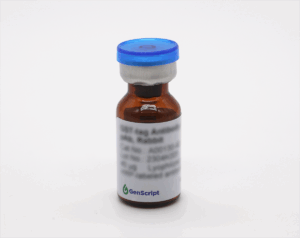
Streptavidin-HRP
$81.94 Add to cart View Product DetailsStreptavidin is a protein that has similar binding properties to avidin. It is isolated from streptomyces avidinii. Streptavidin has a molecular weight of 60 KD and has 4 subunits. Each subunit can bind one molecule of biotin. Biotin is a 244 da water soluble vitamin. Streptavidin has an extremely high binding affinity (Kd=10 – 15 ) for biotin.
Streptavidin – HRP (M00091) is a HRP conjugated streptavidin and can be used for analysis of biotinylated molecules. -

T3 (HCT3)
$125.06 Add to cart View Product DetailsT3, also known as Triiodothyronine, is a thyroid hormone. It plays a key role in controlling body weight, body temperature, muscle strength, and nervous system. T3 is secreted by thyroid. In the blood, elevation of T3 level inhibits the production of TSH in the anterior pituitary gland.
-
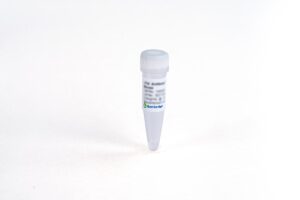
T4 (HCT4)
$125.06 Add to cart View Product DetailsT4,
also known as Thyroxine, is a type of thyroid hormone. It exists in the blood as an equilibrium mixture
of free and serum bound hormone. It plays an important role in regulating body
weight, body temperature, muscle strength, and even your mood. T4 is useful to
diagnose disorders of the thyroid -

TARC/CCL17, Human
$2,190.75 Add to cart View Product DetailsCCL17 is a novel CC chemokine recently identified using a signal sequence trap method. CCL17 cDNA encodes a highly basic 94 amino acid residue precursor protein with a 23 aa residue signal peptide that is cleaved to generate the 71 aa residue mature secreted protein. Among CC chemokine family members, CCL17 has approximately 24 – 29% amino acid sequence identity with RANTES, MIP-1α, MIP-1β, MCP-1, MCP-2, MCP-3 and I-309. The gene for human CCL17 has been mapped to chromosome 16q13 rather than chromosome 17 where the genes for many human CC chemokines are clustered. CCL17 is constitutively expressed in thymus, and at a lower level in lung, colon, and small intestine. CCL17 is also transiently expressed in stimulated peripheral blood mononuclear cells.
-

TECK/CCL25, Human
$2,190.75 Add to cart View Product DetailsCCL25 (thymus expressed chemokine) is a novel CC chemokine that is distantly related (approximately 20% amino acid sequence identity) to other CC chemokines. Mouse CCL25 cDNA has also been cloned and shown to encode a 144 aa protein that exhibits 49% aa sequence identity to human CCL25. The expresssion of human and mouse CCL25 was shown to be highly restricted to the thymus and small intestine. Although dendritic cells have been demonstrated to be the source of CCL25 production in the thymus, dendritic cells derived from bone marrow do not express CCL25.
-

Teriflunomide-d4
$190.61 Add to cart View Product DetailsMolecular Formula : C12 2H4 H5 F3 N2 O2
-
![tert-Butyl 2-[4-(2-Fluorophenyl)-6-methylthieno[2,3-d]pyrimidin-2-ylamino]acetate](https://advatechgroup.com/wp-content/uploads/xsys-masterimagesh20h7a10621020176414B691790-300x179.png.pagespeed.ic.smLpHbw12E.png)
tert-Butyl 2-[4-(2-Fluorophenyl)-6-methylthieno[2,3-d]pyrimidin-2-ylamino]acetate
$88.84 Add to cart View Product DetailsMolecular Formula : C19 H20 F N3 O2 S
-

tert-Butyl 3-((((R)-1-Amino-1-oxobutan-2-yl)amino)methyl)hexanoate-d7
$144.04 Add to cart View Product DetailsMolecular Formula : C15 D7 H23 N2 O3
-
![tert-Butyl-7-[4-(4-fluorophenyl)-6-isopropyl-2-mesylaminopyrimidin-5-yl]-(3R,5S)-dihydroxy-(E)-6-heptenoate](https://advatechgroup.com/wp-content/uploads/sys-masterimageshb8h1110621018538014B691758-300x152.png)
tert-Butyl-7-[4-(4-fluorophenyl)-6-isopropyl-2-mesylaminopyrimidin-5-yl]-(3R,5S)-dihydroxy-(E)-6-heptenoate
$154.39 Add to cart View Product DetailsMolecular Formula : C25H34FN3O6S
-

tert-Butyldimethylsilyloxy-5-aza-2′-deoxycytidine
$214.76 Add to cart View Product DetailsMolecular Formula : C25 H34 O4
-

Testosterone Antibody (7B7HC)
$230.29 Add to cart View Product DetailsTestosterone
is an important sex hormone in males. It is synthesized in the body from
cholesterol. Testosterone is critical for the development of male
reproductive tissues. It also regulates sexual development and red blood cell
production. -

Testosterone Antibody (8A4HC)
$230.29 Add to cart View Product DetailsTestosterone
is an important sex hormone in males. It is synthesized in the body from
cholesterol. Testosterone is critical for the development of male
reproductive tissues. It also regulates sexual development and red blood cell
production. -

TFF3, Human
$2,018.25 Add to cart View Product DetailsThe Trefoil Factor peptides (TFF1, TFF2 and TFF3) are secreted in the gastrointestinal tract, and appear to play an important role in intestinal mucosal defense and repair. TFF-3 is expressed by goblet cells and in the uterus, and has also been shown to express in certain cancers, including colorectal, hepatocellular, and in biliary tumors. TFF3 may be useful as a molecular marker for certain types of cancer, but its role, if any, in tumorigenesis is unknown. TFF3 also promotes airway epithelial cell migration and differentiation.
-

TGF-α, Human
$836.63 Add to cart View Product DetailsTransforming Growth Factor-alpha (TGF-α) , also known as sarcoma growth factor, TGF-type I and ETGF, is a member of the EGF family of cytokines. It is expressed in monocytes, brain cells, keratinocytes and various tumor cells. TGF-α signals through EGFR and acts synergistically with TGF-beta to promote the proliferation of a wide range of epidermal and epithelial cells. TGF-α is a transforming growth factor that is a ligand for the epidermal growth factor receptor, which activates a signaling pathway for cell proliferation, differentiation and development. This protein may act as either a transmembrane-bound ligand or a soluble ligand. The biological actions of TGF-α and EGF are similar. For instance, TGF-α and EGF bind to the same receptor. When TGF-α binds to EGFR it can initiate multiple cell proliferation events.
-

TGF-β 1, Mouse
$2,876.44 Add to cart View Product DetailsTransforming growth factor beta 1 (TGFβ1) is the prototype of a growing superfamily of peptide growth factors and plays a prominent role in a variety of cellular processes, including cell-cycle progression, cell differentiation, reproductive function, development, motility, adhesion, neuronal growth, bone morphogenesis, wound healing, and immune surveillance. TGF-β1, TGF-β2 and TGF-β3 signal via the same heteromeric receptor complex, consisting of a ligand binding TGF-β receptor type II (TβR-II), and a TGF-β receptor type I (TβR-I). Signal transduction from the receptor to the nucleus is mediated via SMADs. TGF-β expression is found in cartilage, bone, teeth, muscle, heart, blood vessels, hematopoietic cells, lung, kidney, gut, liver, eye, ear, skin, and the nervous system.
-

TGF-β 2, Human
$2,876.44 Add to cart View Product DetailsTransforming growth factor beta-2 (TGF-β2) is a secreted protein which belongs to the TGF-beta family. It is known as a cytokine that performs many cellular functions and has a vital role during embryonic development. The precursor is cleaved into mature TGF-beta-2 and LAP, which remains non-covalently linked to mature TGF-beta-2 rendering it inactive. It is an extracellular glycosylated protein. It is known to suppress the effects of interleukin dependent T-cell tumors. Defects in TGFB2 may be a cause of non-syndromic aortic disease (NSAD).
-

TGF-β 2, Mouse
$2,876.44 Add to cart View Product DetailsTransforming growth factor beta 2 (TGF-β2) is a member of TGF-beta superfamily that shares a characteristic cysteine knot structure. Mice with TGF-β2 gene deletion show defects in development of cardiac, lung, craniofacial, limb, spinal column, eye, inner ear and urogenital systems. All TGF-β isoforms signal via the same heteromeric receptor complex, consisting of a ligand binding TGF-β receptor type II (TβR-II), and a TGF-β receptor type I (TβR-I). Signal transduction from the receptor to the nucleus is mediated via SMADs. TGF-β expression is found in cartilage, bone, teeth, muscle, heart, blood vessels, hematopoietic cells, lung, kidney, gut, liver, eye, ear, skin, and the nervous system.
-

TGF-β 3, Human
$2,876.44 Add to cart View Product DetailsTransforming growth factor beta 3(TGFB3) is a member of a TGF -β superfamily which is defined by their structural and functional similarities. TGFB3 is secreted as a complex with LAP. This latent form of TGFB3 becomes active upon cleavage by plasmin, matrix metalloproteases, thrombospondin -1, and a subset of integrins. It binds with high affinity to TGF- β RII, a type II serine/threonine kinase receptor. TGFB3 is involved in cell differentiation, embryogenesis and development. It is believed to regulate molecules involved in cellular adhesion and extracellular matrix (ECM) formation during the process of palate development. Without TGF-β3, mammals develop a deformity known as a cleft palate.
-
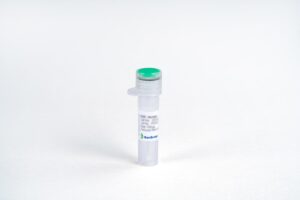
TGF-β1, Human
$2,876.44 Add to cart View Product DetailsTGF-β1 (transforming growth factor beta 1) is one of three closely related mammalian members of the large TGF-β1 superfamily that share a characteristic cystine knot structure. TGF-β1, -2 and -3 are highly pleiotropic cytokines that act as cellular switches to regulate processes such as immune function, proliferation and epithelial-mesenchymal transition. Each TGF-β isoform has some non-redundant function; for TGF-β1, mice with targeted deletion show defects in hematopoiesis and endothelial differentiation and died of overwhelming inflammation. TGF-β1 signaling begins with high-affinity binding to a type II ser/thr kinase receptor termed TGF-β RII. This receptor then phosphorylates and activates a second ser/thr kinase receptor, TGF-β RI (also called activin receptor‑like kinase (ALK)-5), or alternatively, ALK-1. This complex phosphorylates and activates Smad proteins that regulate transcription.
-

TGFβ1, Bovine
$2,742.75 Add to cart View Product DetailsTGF-β1 (transforming growth factor beta 1) is one of three closely related mammalian members of the large TGF-β1 superfamily that share a characteristic cystine knot structure. TGF-β1, -2 and -3 are highly pleiotropic cytokines that act as cellular switches to regulate processes such as immune function, proliferation and epithelial-mesenchymal transition. Each TGF-β isoform has some non-redundant function; for TGF-β1, mice with targeted deletion show defects in hematopoiesis and endothelial differentiation and died of overwhelming inflammation. TGF-β1 signaling begins with high-affinity binding to a type II ser/thr kinase receptor termed TGF-β RII. This receptor then phosphorylates and activates a second ser/thr kinase receptor, TGF-β RI (also called activin receptor‑like kinase (ALK)-5), or alternatively, ALK-1. This complex phosphorylates and activates Smad proteins that regulate transcription.
-

threo-Dihydro Bupropion Hydrochloride
$72.45 Add to cart View Product DetailsMolecular Formula : C13 H20 Cl N O . HCl
-
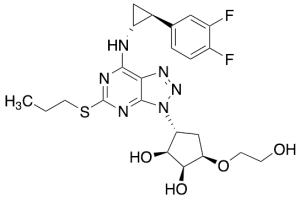
Ticagrelor Epimer
$244.95 Add to cart View Product DetailsMolecular Formula : C23 H28 F2 N6 O4 S
-

TIGIT, His, Human
$1,293.75 Add to cart View Product DetailsT cell immunoreceptor with Ig and ITIM domains (TIGIT) is an immune receptor present on some T cells and natural killer cells (NK). This protein could bind to CD155 (PVR) with high affinity, which causes increased secretion of IL-10 and decreased secretion of IL-12B and suppresses T-cell activation by promoting the generation of mature immunoregulatory dendritic cells. TIGIT could also bind to CD112 (PVRL2) with lower affinity. TIGIT’s inhibition of NK cytotoxicity can be blocked by antibodies against its interaction with PVR and the activity is directed through its ITIM domain.
-

TIM-3 Fc Chimera, Human
$1,293.75 Add to cart View Product DetailsT cell Ig- and mucin-domain-containing molecules (TIMs) are a family of transmembrane proteins expressed by various immune cells. TIM-3 is an inhibitory molecule that is induced following T cell activation. TIM-3 is expressed by exhausted T cells in the settings of chronic infection and cancer, and tumor-infiltrating T cells that co-express PD-1 and TIM-3 exhibit the most severe exhausted phenotype. Tumor-infiltrating dendritic cells also express TIM-3. TIM-3 expression on DCs was found to suppress innate immunity by reducing the immunogenicity of nucleic acids released by dying tumor cells. Research studies show that heterodimerization of TIM-3 with CEACAM-1 is critical for the inhibitory function of TIM-3, and co-blockade of TIM-3 and CEACAM-1 enhanced antitumor responses in a mouse model of colorectal cancer. Its binding to Galectin-9 induces a range of immunosuppressive functions which enhance immune tolerance and inhibit anti-tumor immunity. TIM-3 ligation attenuates CD8+ and Th1 cell responses and promotes the activity of Treg and myeloid derived suppressor cells. In addition, dendritic cell-expressed TIM-3 dampens inflammation by enabling the phagocytosis of apoptotic cells and the cross-presentation of apoptotic cell antigens.
-

TNF-α (80-235aa), Mouse
$1,323.94 Add to cart View Product DetailsTumor Necrosis Factor-Alpha (TNF-alpha) plays a major role in growth regulation, differentiation, inflammation, viral replication, tumorigenesis, and autoimmune disease. Besides inducing hemorrhagic necrosis of tumors, TNF has been found to be involved in tumorigenesis, tumor metastasis, viral replication, septic shock, fever, inflammation, and autoimmune diseasesuch as Crohn’s disease, rheumatoid arthritis and graft-versus-host disease. TNF alpha-1a is a potent lymphoid factor that exerts cytotoxic effects on a wide range of tumor cells and certain other target cells.
-

TNF-α, Bovine
$1,323.94 Add to cart View Product DetailsTumor Necrosis Factor-Alpha (TNF-α) plays a major role in regulating growth, differentiation, inflammation, viral replication, tumorigenesis, and autoimmune diseases. TNF alpha-1a is a potent lymphoid factor that exerts cytotoxic effects on a wide range of tumor cells. In addition to inducing hemorrhagic necrosis of tumors, studies indicate TNF is involved in tumor igenesis, tumor metastasis, viral replication, septic shock, fever, inflammation, Crohn’s disease, rheumatoid arthritis and graft-versus-host disease.
-

TNF-α, His, Human
$612.38 Add to cart View Product DetailsTumor Necrosis Factor-Alpha (TNF-alpha) plays a major role in growth regulation, differentiation, inflammation, viral replication, tumorigenesis, and autoimmune diseases. Besides inducing hemorrhagic necrosis of tumors, TNF has been found to be involved in tumorigenesis, tumor metastasis, viral replication, septic shock, fever, inflammation, and autoimmune diseases including Crohn’s disease, and rheumatoid arthritis as well as graft-versus-host disease. TNF alpha-1a is a potent lymphoid factor that exerts cytotoxic effects on a wide range of tumor cells and certain other target cells.
-

TNF-α, Human
$586.50 Add to cart View Product DetailsTumor Necrosis Factor-alpha (TNF-a) is a homotrimer with a subunit molecular mass of 17.3 kDa. Tumor Necrosis Factor-alpha(TNF-a) plays a major role in growth regulation, differentiation, inflammation, viral replication, tumorigenesis, and autoimmune diseases; and in viral, bacterial, fungal, and parasitic infections. Besides inducing hemorrhagic necrosis of tumors, TNF has been found to be involved in tumorigenesis, tumor metastasis, viral replication, septic shock, fever, inflammation, and autoimmune diseases including Crohn’s disease, and rheumatoid arthritis as well as graft-versus-host disease.
-

TNF-α, Human (P. pastoris-expressed)
$612.38 Add to cart View Product DetailsTumor Necrosis Factor-Alpha (TNF-alpha) plays a major role in growth regulation, differentiation, inflammation, viral replication, tumorigenesis, and autoimmune diseases. Besides inducing hemorrhagic necrosis of tumors, TNF has been found to be involved in tumorigenesis, tumor metastasis, viral replication, septic shock, fever, inflammation, and autoimmune diseases including Crohn’s disease, and rheumatoid arthritis as well as graft-versus-host disease. TNF alpha-1a is a potent lymphoid factor that exerts cytotoxic effects on a wide range of tumor cells and certain other target cells.
-

TNF-α, Mouse (P. pastoris-expressed)
$1,177.31 Add to cart View Product DetailsTumor necrosis factor alpha (TNF-α) is produced by neutrophils, activated lymphocytes, macrophages, NK cells, LAK cells, astrocytes endothelial cells, smooth muscle cells and some transformed cells. Mouse TNF-α occurs as a membrane-anchored form. The naturally-occurring form of TNF-α is glycosylated, but non-glycosylated recombinant TNF-α has comparable biological activity. The biologically active native form of TNF-α is reportedly a trimer. Human and mouse TNF-α show approximately 79% homology at the amino acid level and crossreactivity between the two species.






